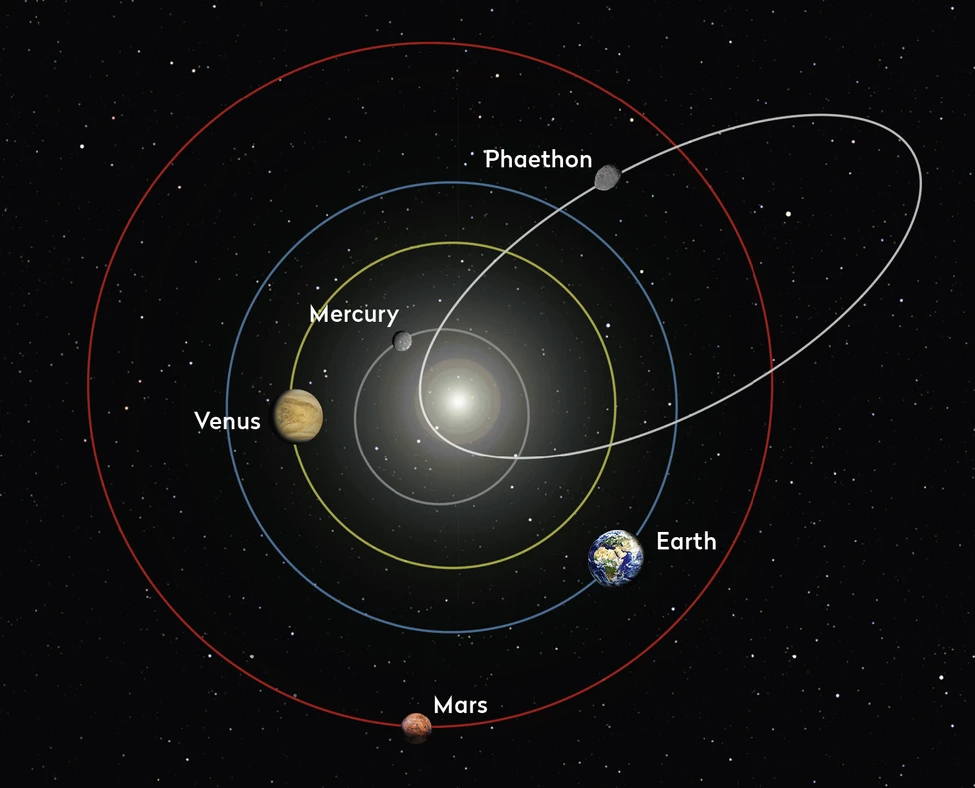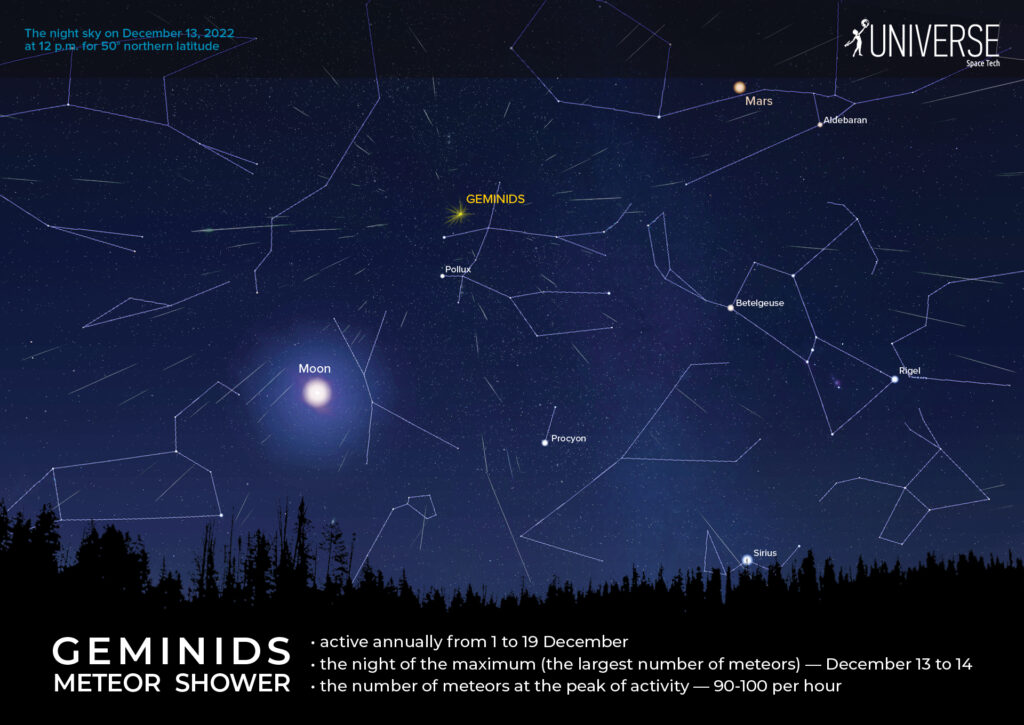In mid-December, the maximum activity of the most powerful annual meteor shower of the Earth’s sky falls. Fortunately for us, it is perfectly visible from the Northern Hemisphere, but, on the other hand, the weather this month does not always allow us to enjoy a celestial show, during which we can see over a hundred “shooting stars” per hour. We are talking about Geminids with a radiant in the constellation Gemini.
Geminids are one of the few meteor swarms which “progenitors” are not a comet, but an asteroid discovered back in 1983 with the help of the first infrared orbital telescope IRAS. It was given the name Phaethon (3200 Phaethon) due to the fact that of all the asteroids known at that time, it could come closest to the Sun: the perihelion of its orbit is located at a distance of only 0.14 AU (20.9 million km) from the center of our luminary. At first, this object was considered a “dried-up comet”, which, after many rotations in such an exotic orbit, completely lost volatiles in its core, lost the ability to form a gas shell (coma) and turned into an ordinary “heavenly rock”. Subsequent observations show that a dust cloud is constantly present around it, that is, it continues to emit dust particles. They, in turn, are gradually distributed along its trajectory, passing only 2 million km from the earth’s orbit, and every year they fly into the atmosphere of our planet, forming meteors.

Only by carefully examining the spectra of these meteors, astronomers can understand how an asteroid, which does not have volatile components in its composition that evaporate when approaching the Sun, continues to throw solid particles into space. The fact is that its surface consists of minerals that do not fuse with strong heating, but crack. The gravity of the 6-kilometer “heavenly rock” is not enough to keep the dust formed on the surface, so it dissipates into the surrounding space. This discovery led to the emergence of a new class of astronomical objects, called “active asteroids”.

Since the concentration of dust near the orbit of Phaethon is quite large, and it itself lies not far from the Earth’s orbit, the Geminids are the most powerful annual meteor shower: at the peak of activity, they “produce” more than a hundred meteors per hour. On the days of the maximum on December 13-14, their radiant rises already in the evening twilight and after a few hours rises high enough above the horizon. Unfortunately, this year we will not have much time for observations, because at about 9 p.m. (December 14 — 10 o’clock) the Moon should rise in our latitudes, which will prevent us from seeing a lot of weak meteors. But there should be enough bright ones to make a good heavenly show. Therefore, the only thing that can interfere with observations is the capricious December weather. However, according to the latest forecasts, there is still a certain probability of clear sky in the coming evenings.
Follow us on Twitter to get the most interesting space news in time
https://twitter.com/ust_magazine

